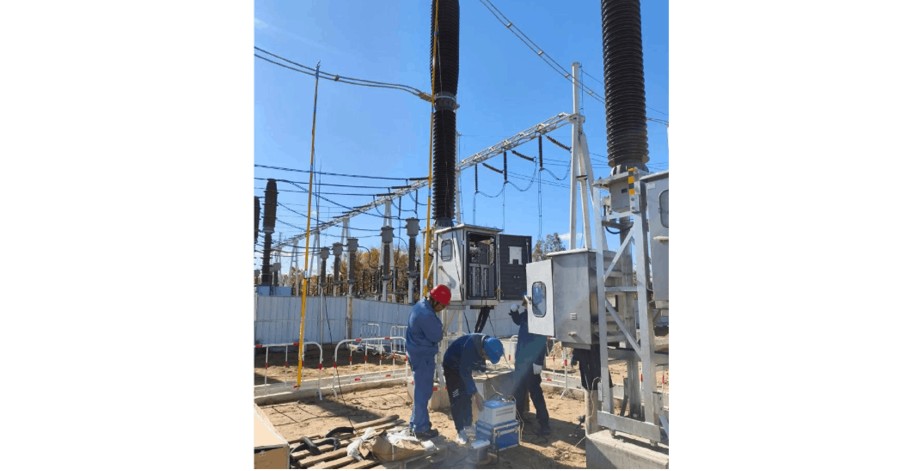1. Overview of Surge Arrester Handover Test Technology
1.1 Necessity of Handover Test
Ang handover test usa ka importante nga langkah sa pag-ensure sa performance ug safe operation sa mga surge arrester sa mga power system. Para sa mga power system nga may voltage levels sa 220 kV o mas lawas, ang mga surge arrester naglupad og core role sa pagprotekta sa mga electrical equipment gikan sa damage nga gipasabot pinaagi sa overvoltages ug lightning strikes. Apan, sulod sa proseso gikan sa pag-uli sa arrester gikan sa factory hangtod sa iyang actual operation human sa installation, ang mga environmental factors o operational oversights sa panahon sa transportation, storage, ug installation mahimong maghatag og impact sa iyang performance. Pinaagi sa handover test, ang mga manufacturing defects, transportation damages, ug installation issues mahimo mong ma-identify sa agad, nagsiguro nga ang arrester adunay optimal condition bago isulbar sa operation ug naghilabot sa pag-iwas sa fault risks sa panahon sa operation, busa nag-maintain sa stability ug reliability sa power grid.
1.2 Main Contents of Handover Test
Ang handover test gitumong sa duha ka core aspects:
Electrical Performance Testing: Nag-verify kung ang electrical characteristics sa surge arrester naa sa design requirements sa specific conditions, nagsiguro sa iyang protective function sa panahon sa overvoltages ug lightning strikes. Ang aktwal nga tests covers items sama sa DC reference voltage (reflecting volt-ampere ug nonlinear characteristics), leakage current testing, as well as power frequency reference voltage, leakage current sa 0.75 times the DC reference voltage, discharge counter operation, residual voltage, power frequency withstand voltage, ug impulse voltage tests, comprehensively evaluating electrical performance.
Insulation Resistance Testing: Nadetect ang insulation status sa surge arrester, nakakita sa mga hidden dangers sama sa insulation damage ug excessive leakage current sa panahon sa operation. Pinaagi sa pag-measure sa insulation resistance, it determines whether the insulation performance meets the standards, preventing system problems caused by insulation faults.
1.3 Standards and Specifications for Handover Test
Ang handover test kinahanglan stricto nga moadhere sa domestic ug international standards ug specifications aron sigurado ug reliable ang testing. Ang standards clear nga define ang test methods ug technical requirements sa electrical characteristics ug environmental adaptability sa surge arresters. Combined with the actual situation of China’s power system, they refine requirements for test equipment, environment, ug procedures, ensuring the standardization of the testing process ug the credibility of results. Sa panahon sa testing, ang equipment ug instruments nga may precision requirements dapat gamiton, operated by professional personnel in accordance with standard procedures. Meanwhile, attention should be paid to environmental temperature, humidity, ug electromagnetic interference to simulate the actual operating environment ug obtain accurate data.

2. Overview of Live Testing Technology
2.1 Significance of Live Testing
Ang live testing wide nga applied sa power systems, featuring the advantages of non-intrusiveness ug real-time monitoring:
Avoid losses from power outages: Detection can be carried out without power interruption, ensuring power supply continuity ug reducing economic ug social impacts.
Real-time status monitoring: Dynamically detects the insulation, conductivity, ug thermal status of surge arresters without interfering with normal operation, promptly identifying potential fault hazards ug facilitating planned maintenance, preventing large-scale power outages ug equipment damage.
Whole-life cycle management: By detecting the electrical performance ug insulation status of surge arresters, it assesses their health conditions, ensuring proper operation during lightning strikes ug overvoltages. Analyzing test data enables the formulation of targeted maintenance strategies, extending equipment service life ug reducing fault risks, providing a basis for condition-based maintenance ug preventive maintenance.
Promote smart grid development: Improve the operational reliability of electrical equipment, ensure the safe production ug economic benefits of power enterprises, ug facilitate the intelligent ug modernized management upgrade of power systems.
2.2 Technical Principles of Live Testing
The technical principle of live testing is mainly based on multiple physical phenomena such as electromagnetism, thermodynamics, ug acoustics. By measuring ug analyzing parameters like the electromagnetic field, temperature field, ug sound waves of equipment in a live state, it judges the operation status ug health condition of the equipment.
Common methods for live testing include:
Infrared Detection: Using infrared thermal imaging technology to detect the surface temperature distribution ug heat transfer of the equipment, identify abnormal high-temperature areas, ug diagnose issues such as overheating, poor contact, or insulation aging in the equipment.
Ultrasonic Detection: Capture ultrasonic signals generated inside ug on the surface of the equipment to evaluate the insulation status of the equipment.
Impulse Voltage Detection: Measure the impulse voltage signals inside the equipment to determine the location ug severity of insulation defects, ug simultaneously analyze characteristics such as the signal intensity, frequency, ug voltage waveform.
The basic principle of live testing can be summarized as:

Sa formula, E(t) is the detected signal, A is the amplitude of the signal, φ is the angular frequency, ω is the phase angle, ug (n(t) is the noise signal.
2.3 Implementation of Live Testing
When conducting live testing, select ug configure equipment/instruments based on the test object type ug operating environment, matching appropriate sensors ug detectors. For surge arrester live testing, common tools include infrared thermal imagers, ultrasonic detectors, impulse voltage detectors, ug live testers—these offer high sensitivity/resolution for accurate detection in complex electromagnetic environments.
Pre-test: Calibrate instruments to ensure measurement accuracy/stability.
During test: Scientifically arrange sensor positions/angles to fully cover key parts ug collect accurate data, ensuring test reliability. Test personnel must strictly follow procedures, prioritize safety, ug avoid errors/accidents from improper operations.
Post-test: Conduct in-depth data analysis, confirm/diagnose abnormal signals, ug take targeted maintenance/repair measures to accurately determine equipment status ug hidden faults.
3 Analysis of Technology Application Cases
3.1 Handover Test Case
For a 220 kV surge arrester handover test, technical personnel performed comprehensive tests (electrical performance, insulation resistance, etc.) on newly installed arresters.
Electrical performance test: DC reference voltage results showed electrical characteristics met standards (smooth volt-ampere curves, no abnormal fluctuations).
Insulation resistance test: Arresters exhibited good insulation (resistance within specified ranges).
Impulse voltage test: A high-sensitivity detector confirmed no obvious internal insulation abnormalities.
During power frequency/impulse voltage tests, arresters withstood rated voltages ug operated normally. Stable post-installation operation verified test accuracy, ensuring safe commissioning. Technical personnel optimized processes based on experience, improving efficiency/accuracy.
3.2 Live Testing Case
During a substation live test, technical personnel performed infrared detection ug impulse voltage tests on operating 220 kV arresters:
Infrared detection: A thermal imager detected a ~10 °C abnormal temperature rise at an upper position.
Impulse voltage test: Further detection revealed stronger impulse voltage signals at this position, indicating an insulation defect—subsequently confirmed by lower-than-normal insulation resistance.
Targeted repairs restored normal operation. This test timely eliminated hidden dangers, providing valuable experience for future equipment monitoring/maintenance.
3.3 Experience Summary and Recommendations
In the handover test of surge arresters, ensuring their electrical performance ug insulation resistance meet the standards is the core prerequisite for reliable commissioning of the equipment. During actual operations, attention should be paid to the calibration ug maintenance of test equipment. Regular maintenance ensures measurement accuracy ug stability. Meanwhile, strengthen the analysis ug management of detection data: establish equipment health records ug build trend analysis models to realize real-time monitoring of equipment status ug fault prediction. The test data of live tests in a certain substation are detailed in Table 1.

From Table 1, it can be seen that standardized live testing ug timely maintenance are effective approaches to enhancing the operational reliability of equipment, ensuring the stable operation of the power system.
4. Conclusion
The handover test ug live testing technologies for surge arresters below the 220 kV class are highly effective in ensuring the reliable operation of surge arresters. In the future, as detection technologies continue to innovate ug develop, the intelligent management level of the power system will be further enhanced, thus providing a more solid technical guarantee for the safe ug stable operation of the power grid.

























